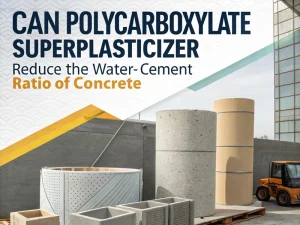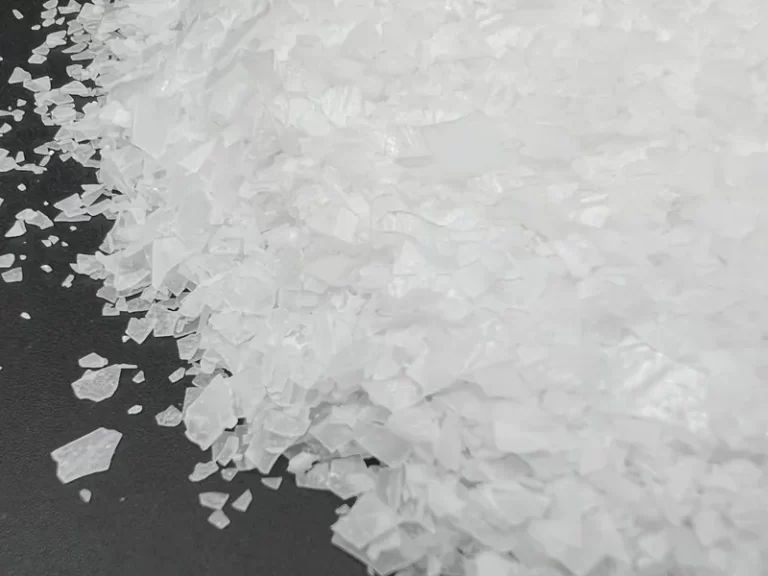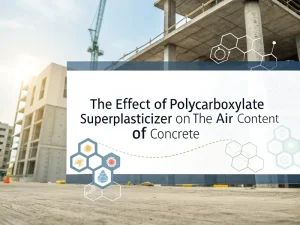
Can Polycarboxylate Superplasticizer Reduce The Water Cement Ratio Of Concrete?
Blog Can polycarboxylate
Blog

HPEG 2400, which stands for Hydroxy Polyethylene Glycol 2400, has a distinct molecular architecture. It consists of a polyethylene glycol chain with a molecular weight of approximately 2400, along with a hydroxypropyl ether group attached.
The polyethylene glycol chain is hydrophilic in nature, endowing HPEG 2400 with excellent solubility in water and many polar solvents. This characteristic is fundamental to its performance in various chemical reactions and formulations.
The hydroxypropyl ether group, on the other hand, imparts reactivity and the ability to participate in polymerization reactions, opening up a plethora of possibilities for its utilization.
The concrete industry has been one of the major beneficiaries of HPEG 2400. As a crucial component in polycarboxylate superplasticizers, it has revolutionized concrete technology.
When added to concrete mixtures, it significantly enhances the fluidity of the concrete. This means that concrete can be more easily pumped and placed, even in complex and hard-to-reach areas of a construction site. It also enables a reduction in the water-cement ratio. By reducing the amount of water needed while maintaining the workability, the compressive strength of the concrete is increased.
For instance, in many high-rise building projects, the use of HPEG 2400-based superplasticizers has allowed for the construction of taller and more structurally sound buildings. In addition, it improves the durability of concrete by reducing porosity and enhancing resistance to environmental factors such as freeze-thaw cycles and chemical attacks.
Solubility and Compatibility: Thanks to its hydrophilic polyethylene glycol chain, HPEG 2400 exhibits outstanding solubility in aqueous systems. It can be easily incorporated into a wide variety of formulations, whether it’s in the production of concrete admixtures, polymers, or other chemical mixtures. It also shows good compatibility with other chemicals, allowing it to work synergistically with different components.
Reactivity in Polymerization: The presence of the reactive hydroxypropyl ether group makes HPEG 2400 an ideal candidate for polymerization reactions. It can copolymerize with other monomers, such as acrylic acid or methacrylic acid, to form polymers with tailored properties. For example, in the synthesis of polycarboxylate superplasticizers for concrete, HPEG 2400 contributes to the formation of a polymer that can effectively disperse cement particles, improving the workability and strength of concrete.
Low Toxicity and Environmental Friendliness: In an era where environmental concerns are paramount, HPEG 2400 has an edge. It is relatively low in toxicity compared to some traditional chemical additives. This makes it a more sustainable choice for applications where environmental impact is a consideration, such as in the construction industry where large quantities of materials are used.
To ensure the consistent quality of HPEG 2400, strict quality control measures are implemented during its production. We carefully monitor the raw material selection, the reaction conditions, and the purification processes.
The molecular weight distribution of HPEG 2400 is closely controlled, as any deviation can affect its performance in end applications. Advanced analytical techniques such as gel permeation chromatography are used to measure and maintain the desired molecular weight and purity levels. Additionally, production facilities are designed to comply with safety and environmental regulations, minimizing the impact on both workers and the surrounding environment.
In conclusion, HPEG 2400 is truly a star product in the chemical industry. Its unique chemical structure, excellent properties, and diverse applications make it an invaluable asset in multiple sectors.
Whether it’s building stronger and more durable structures or creating innovative polymers, HPEG 2400 continues to make a significant impact and holds great promise for the future of chemical engineering and related industries
Explore more possibilities of HPEG 2400 with us!

Can Polycarboxylate Superplasticizer Reduce The Water Cement Ratio Of Concrete?
Blog Can polycarboxylate

The Effect Of Polycarboxylate Superplasticizer On The Air Content Of Concrete
Blog The effect of polyca